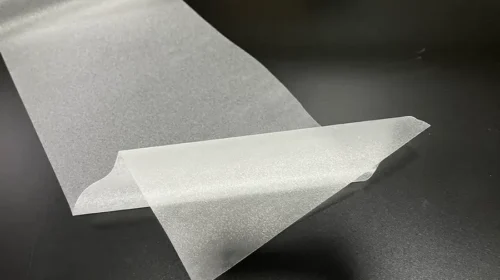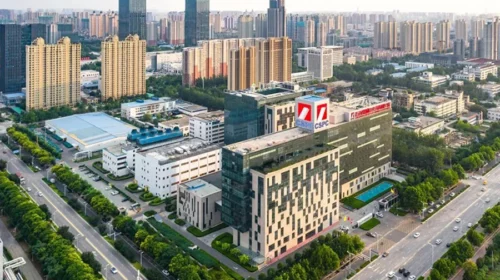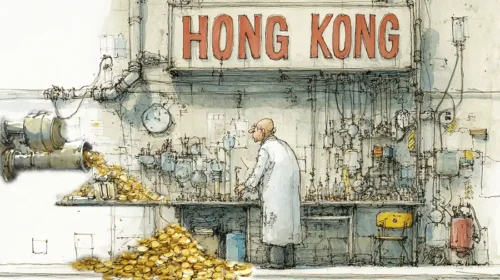HighTide Therapeutics places big IPO bet on “affluenza” drug

The company is pouring almost all its R&D budget into producing a metabolic drug to treat several conditions including diabetes
Key Takeaways:
- With no products yet on the market, HighTide Therapeutics has posted losses of 440 million yuan over the past two years due to soaring R&D expenses
- The company is going for broke by ploughing 95% of its R&D spending into a single drug
By Ellie Si
Even by the standards of the pharmaceutical industry, it’s a bold gamble. A Chinese drug company is staking its future on developing a single treatment for a range of disorders associated with affluence, from diabetes to chronic liver disease.
The company, HighTide Therapeutics Inc., has poured almost all its R&D money into the one core drug, hoping to hit the jackpot if it succeeds in producing a novel medicine for some of the metabolic and digestive conditions that plague industrialized societies, exacerbated by obesity and inactive lifestyles.
For its shot at success, the company needs cash. At the end of May it filed an application to list on the Hong Kong Stock Exchange, with UBS and Huatai International acting as joint sponsors.
According to the prospectus, HighTide is a globally integrated biopharmaceutical company focused on discovering and developing novel drugs to treat chronic liver diseases, gastrointestinal conditions and metabolic disorders. Its main medication targets include type 2 diabetes, the liver disease non-alcoholic steatohepatitis (NASH), and severe hypertriglyceridemia, a build-up of harmful fats in the body.
These diseases have been dubbed “metabolic affluenza” because of their prevalence in wealthy societies and the role of the body’s system to turn food into energy. The market for a multi-functional breakthrough drug could be enormous.
A study conducted by China Insights Consultancy found huge business potential for treating metabolic and digestive diseases, including NASH, type 2 diabetes, severe hypertriglyceridemia and two diseases caused by liver inflammation: primary sclerosing cholangitis and primary biliary cholangitis. The study estimated the global market for treating such illnesses was worth up to $323 billion a year.
For an example of the business potential, take the new weight-loss drug semaglutide, which is also used to treat diabetes. Global sales exceeded $4.2 billion in the first quarter, boosting the earnings of its maker Novo Nordisk (NVO.US).
But the path to a blockbuster drug is strewn with obstacles, not least finding the money to pay for development.
Two years of big losses
HighTide Therapeutics, one of the stars of metabolic drug research in China, was founded in 2011 and has already gone through several financing rounds. In 2022, when investor interest in backing innovative drugs had cooled, the company raised $26.6 million in a Series C+ financing. The latest post-investment valuation stands at $537 million, or about 3.8 billion yuan.
Still, the drug developer remains strapped for cash. At the end of March, HighTide held cash and bank balances of 351 million yuan ($49 million), with total current assets of about 800 million yuan. But operating cash outflow reached 172 million yuan in 2022. With no sales revenues, the company might only manage to sustain its business for two years, even without increasing R&D spending or expanding its workforce.
Without any approved drugs on the market, HighTide has been eking out a living from patent transfer licenses. In the past two years, the company logged 13.82 million yuan and 20.58 million yuan in income, but its net losses amounted to 217 million yuan and 224 million yuan. In just two years it sank more than 440 million yuan into the red.
HighTide said the losses stemmed mostly from R&D costs of 84.01 million yuan in 2021 and 183 million yuan in 2022, coupled with administrative expenses of more than 43 million yuan over the two years. The company is clearly under mounting financial pressure.
Even the company’s fastest-moving drug is still in Phase II clinical trials and faces considerable uncertainty before hitting the market. The number of patients required for Phase III trials is usually much higher than for the earlier stage, likely forcing the company to keep burning through cash to keep the pipeline running.
Betting big on one product
Overall, HighTide has five drug candidates in its R&D pipeline covering nine conditions. But in investment terms, the company is placing a “sink-or-swim” bet on a single drug candidate, HTD1801. In the past two years, it spent 76 million yuan and 174 million yuan on the drug, accounting for 90.5% and 95.1% of its R&D expenditure.
According to the prospectus, HighTide’s core drug is an anti-inflammatory and metabolic modulator targeting the intestinal-liver tract, which regulates many metabolic functions and is implicated in a number of metabolic and digestive disorders. The drug is being developed as a treatment for type 2 diabetes, NASH, severe hypertriglyceridemia, primary sclerosing cholangitis and primary biliary cholangitis.
HighTide Therapeutics says the drug has the potential to become a fundamental therapy for those disorders. China has the highest number of people with type 2 diabetes in the world, at more than 120 million patients, according to research from China Insights Consultancy. The number is expected to increase to more than 140 million by 2032. Worldwide around half of patients with type 2 diabetes also suffer from the liver disorder NASH, but there are no approved drugs on the market that provide comprehensive benefits for both illnesses.
Based on current progress, HighTide Therapeutics is expected to submit a Chinese marketing application for HTD1801 in 2025 for treating type 2 diabetes. In addition, U.S. regulators granted the drug fast track status for use against NASH and it has completed Phase II clinical trials there. Meanwhile, the drug will enter Phase II clinical trials for treating patients with severe hypertriglyceridemia.
In the end, the drug company’s fate will depend on the success of its fund-raising effort, and whether it can cash in a winning bet on its flagship metabolic drug.
To subscribe to Bamboo Works weekly free newsletter, click here






